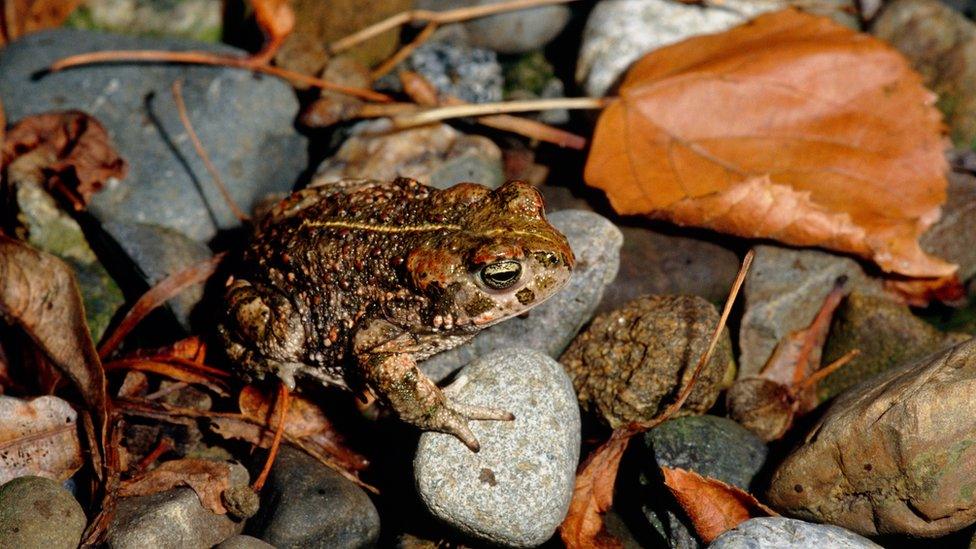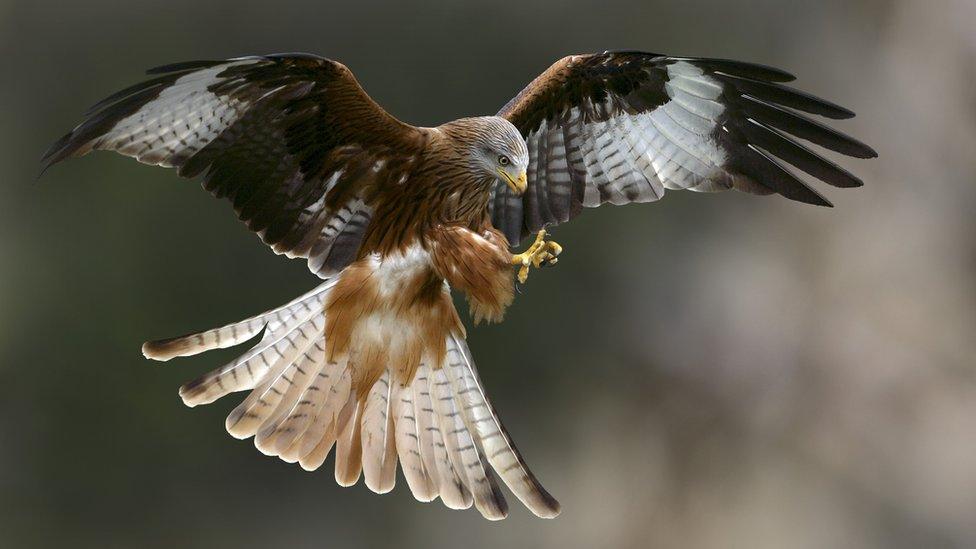UK wildlife decline has slowed, but not stopped
- Published

Rare species such as the Natterjack toad are protected under UK law
The health of the countryside varies depending on how it is measured.
Farmers witness some bird species making a spectacular comeback.
Conservationists see other birds slipping towards extinction and register a huge loss of insect populations in the countryside.
Both sides have a case as the changing countryside is producing winners and losers.
The NFU, for instance, argues that species loss has slowed since the big decline driven by the early decades of farm intensification since the 1950s.
Conservationists don't disagree. But good species data exist only from 1970. And the report shows a clear ongoing decline in farmland species of around 20% from then, including an 8% decline from 2002–2013.
The trend improved slightly between 2011-2013, but the RSPB say it’s too soon to say if this is just a fluctuation influenced by weather and other factors.
The picture of wildlife is also radically different whether it's seen through binoculars or a magnifying glass.
Farmers watch red kites and buzzards re-colonising following the end of persecution; pigeons benefiting from autumn sowing; and barn owls increasing thanks to conservation measures.
They note that cirl buntings numbers have boomed in Devon since a grant-funded conservation programme.
Other bird species, though, have continued to decline - including skylarks, corn buntings and turtle doves. The Farmland Bird Indicator shows a drop of 54% since 1970.

Red kites have re-colonised areas following persecution
A broader indicator list of 762 farmland species shows invertebrates are suffering very badly. The indicator of butterfly species has declined by 41% since 1976. There are also worries about the decline in pollinators.
Of the 1,118 farmland species assessed for extinction risk using national Red Lists, 137 (12%) were categorised as threatened.
The big picture finds a roughly even balance between winners and losers in the countryside. It shows that 52% of farmland species declined and 48% increased.
The RSPB says that apparently reassuring statistic is deceptive because it does not reflect the very fast rates of decline of some species heading towards extinction.
Twelve of 26 farmland breeding bird species, for instance, are now Red-Listed of conservation concern in the UK.
Behind the interpretation of the statistics lies a political battle. The average household pays £400 a year to subsidise British farmers through the EU’s Common Agricultural Policy, and those payments are up for discussion since the Brexit vote.
Ministers have said they want public goods (conservation, water management, flood alleviation) for public money, but the NFU is arguing that farm subsidies are working and should continue. Treasury funding for wildlife is by no means assured.
Follow Roger on Twitter., external